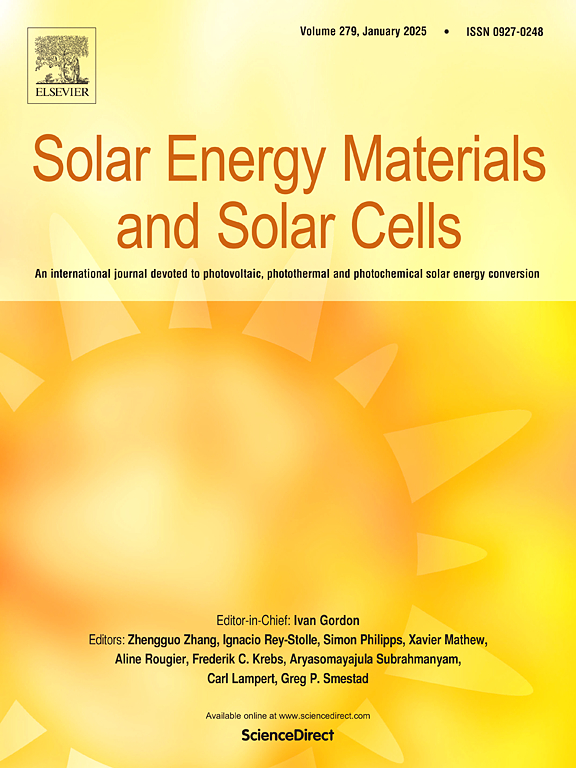Correlation between damp-heat test and field operation for electrode corrosion in photovoltaic modules
IF 6.3
2区 材料科学
Q2 ENERGY & FUELS
引用次数: 0
Abstract
In order to determine the correlation between damp-heat test and field exposure, the degradation mode related to corrosion in photovoltaic modules was investigated in detail based on the change in acetic acid concentration in the ethylene-vinyl acetate encapsulant on the light-receiving side and power retention rate during combination tests that varied temperature, relative humidity, and a new factor, the light intensity.
The estimated activation energy for acetic acid generation was relatively high at 0.65 eV in the absence of light; however, it decreased to 0.08 eV under illumination. The correspondence between damp-heat test and field exposure was approximately equivalent to 1000 h of damp-heat test and 3–6 years of field exposure in humid areas. The relationship between the acetic acid concentration and the recovered power retention rate was approximately −0.002% per μg/g, even for modules with high acetic acid resistance. This suggests that an acetic acid concentration of 10000 μg/g can serve as a benchmark for the power lifetime, at which point the power falls below 80%.
The power transition prediction was derived from a combination of acetic acid concentration prediction and this relationship. In climates hotter and more humid than Cfa classification, the lifetime is anticipated to be within 20 years, if no efforts are made to improve the reliability of the cell or encapsulant. For long-term reliability of modules operated in humid regions, the use of a single polyolefin layer as the light-receiving side encapsulant or appropriate assessment by the acceleration test is required.

求助全文
约1分钟内获得全文
求助全文
来源期刊

Solar Energy Materials and Solar Cells
工程技术-材料科学:综合
CiteScore
12.60
自引率
11.60%
发文量
513
审稿时长
47 days
期刊介绍:
Solar Energy Materials & Solar Cells is intended as a vehicle for the dissemination of research results on materials science and technology related to photovoltaic, photothermal and photoelectrochemical solar energy conversion. Materials science is taken in the broadest possible sense and encompasses physics, chemistry, optics, materials fabrication and analysis for all types of materials.
 求助内容:
求助内容: 应助结果提醒方式:
应助结果提醒方式:


